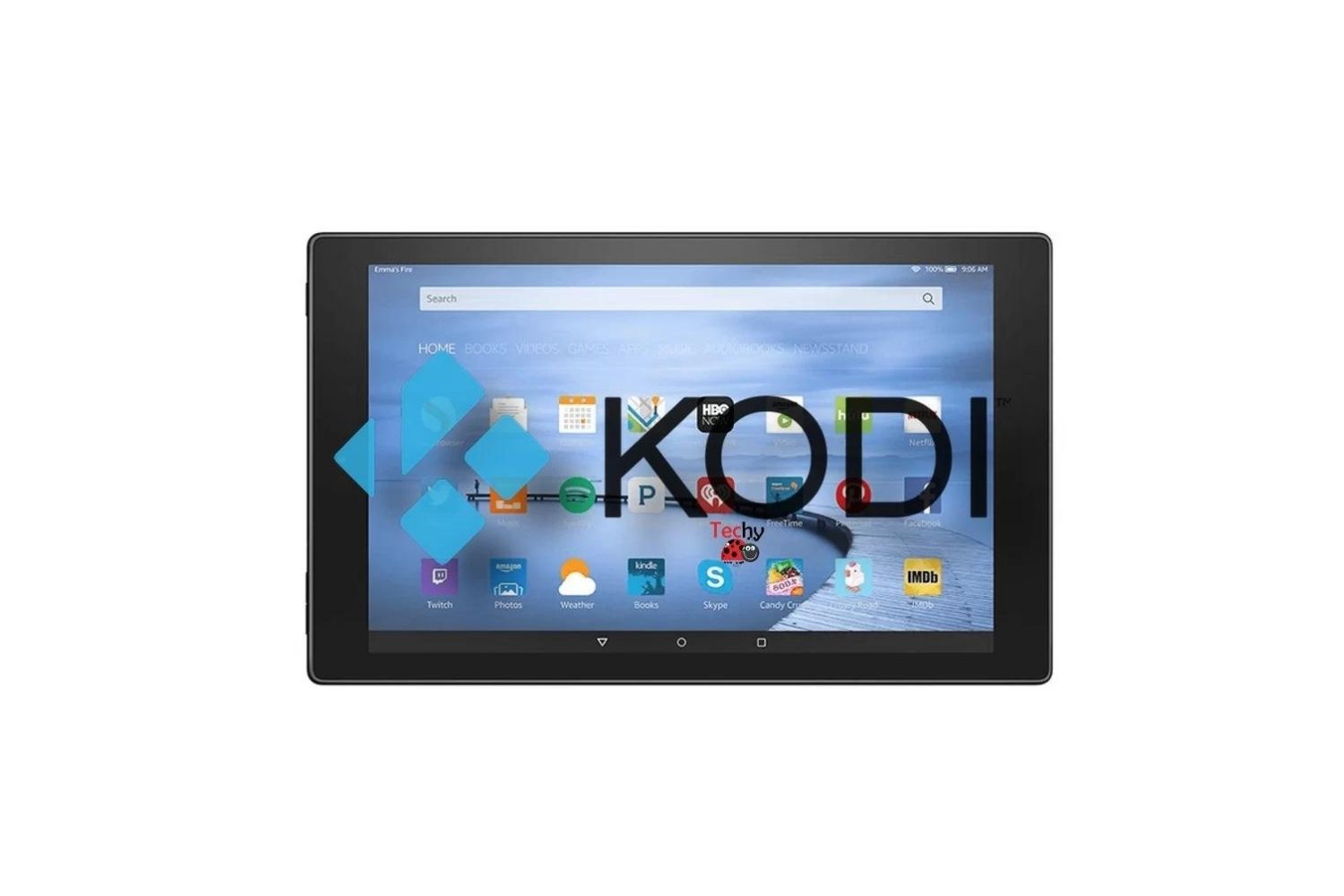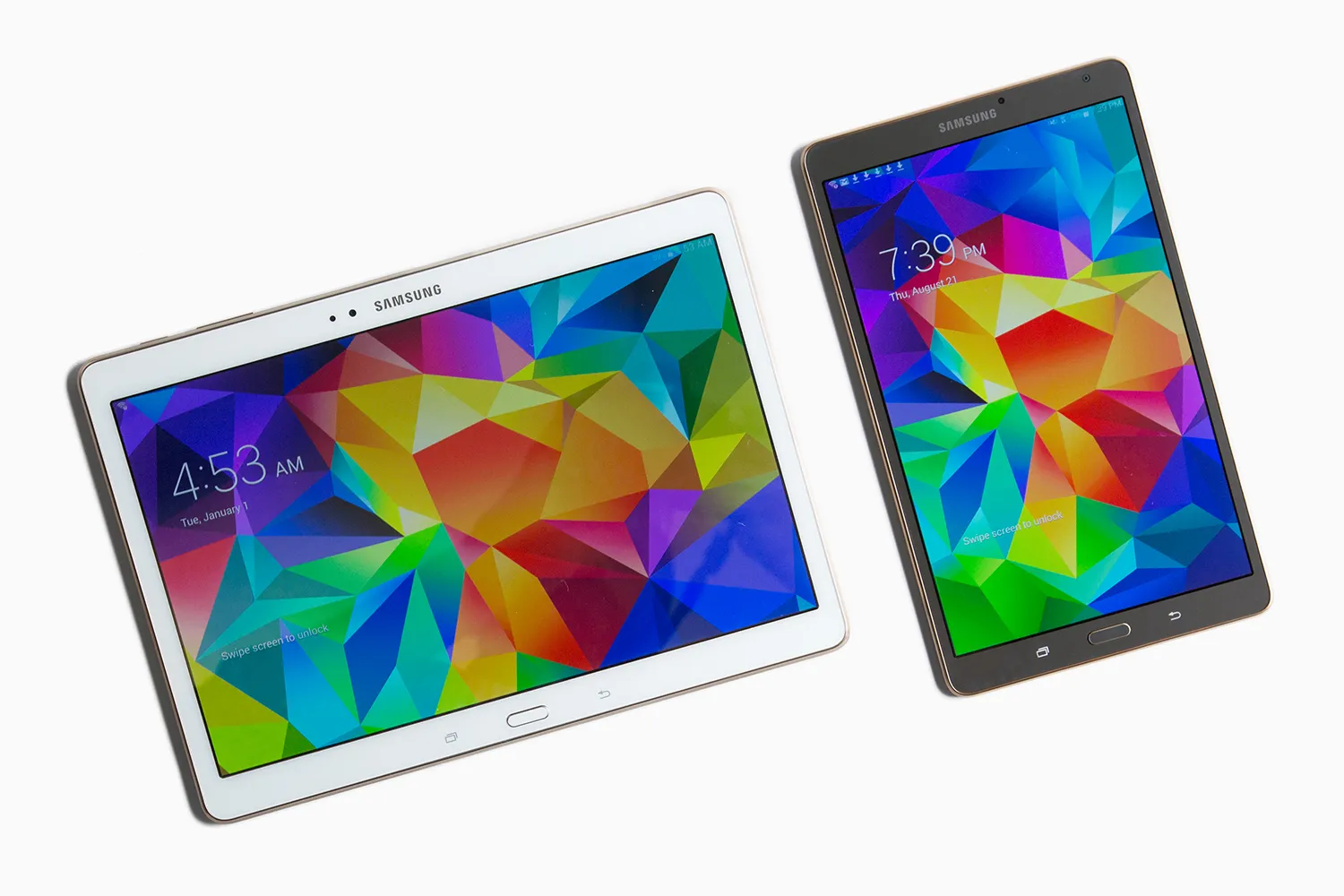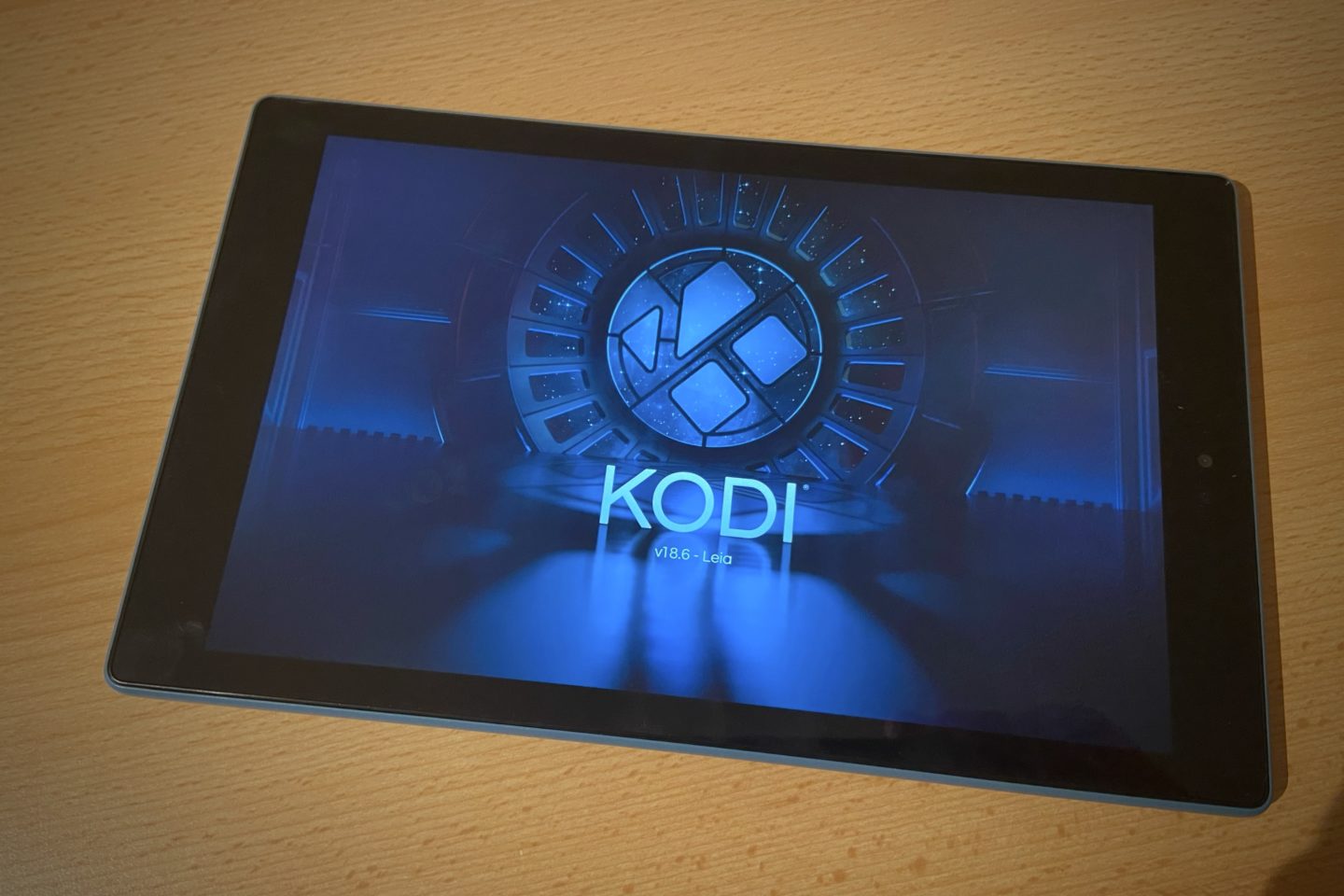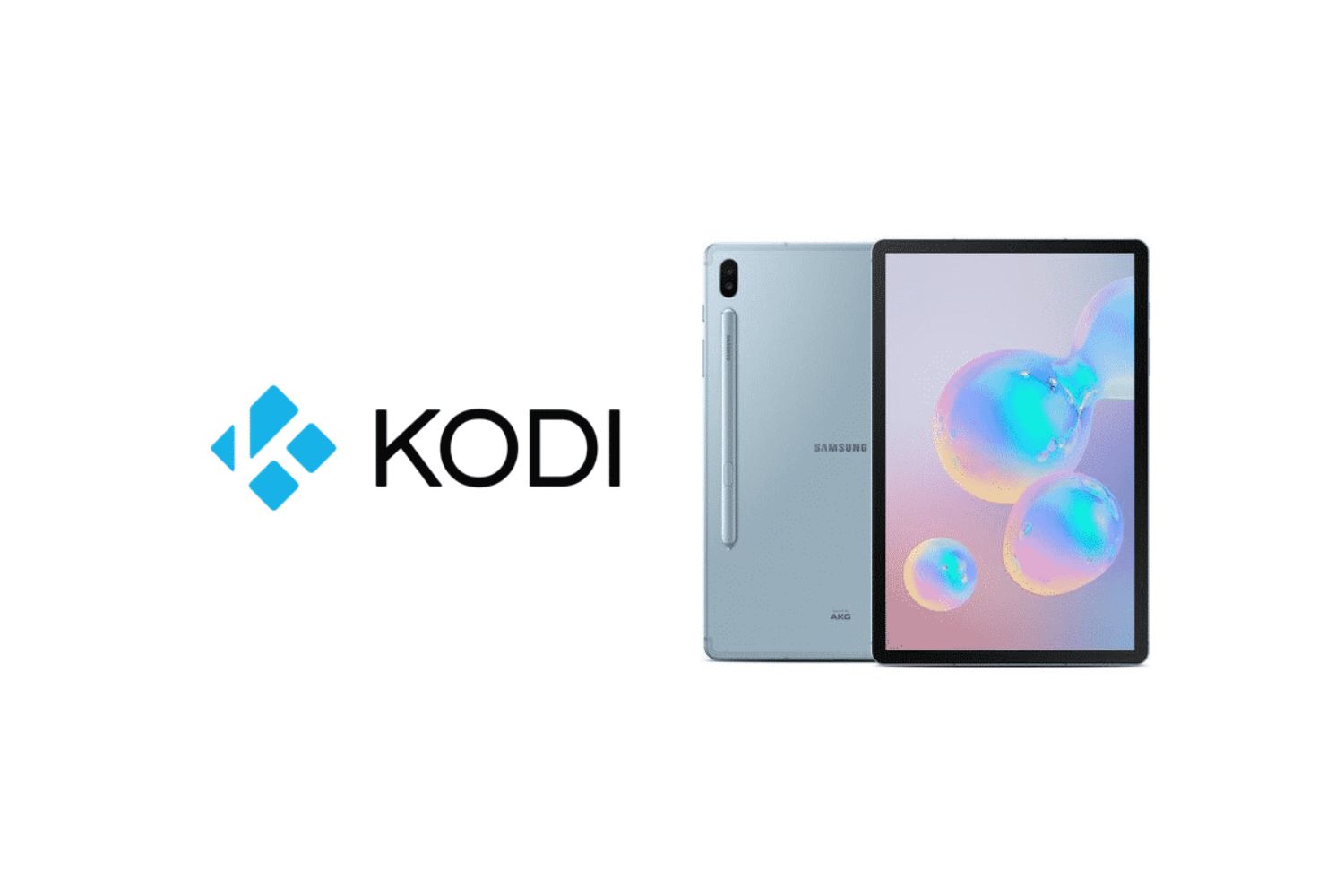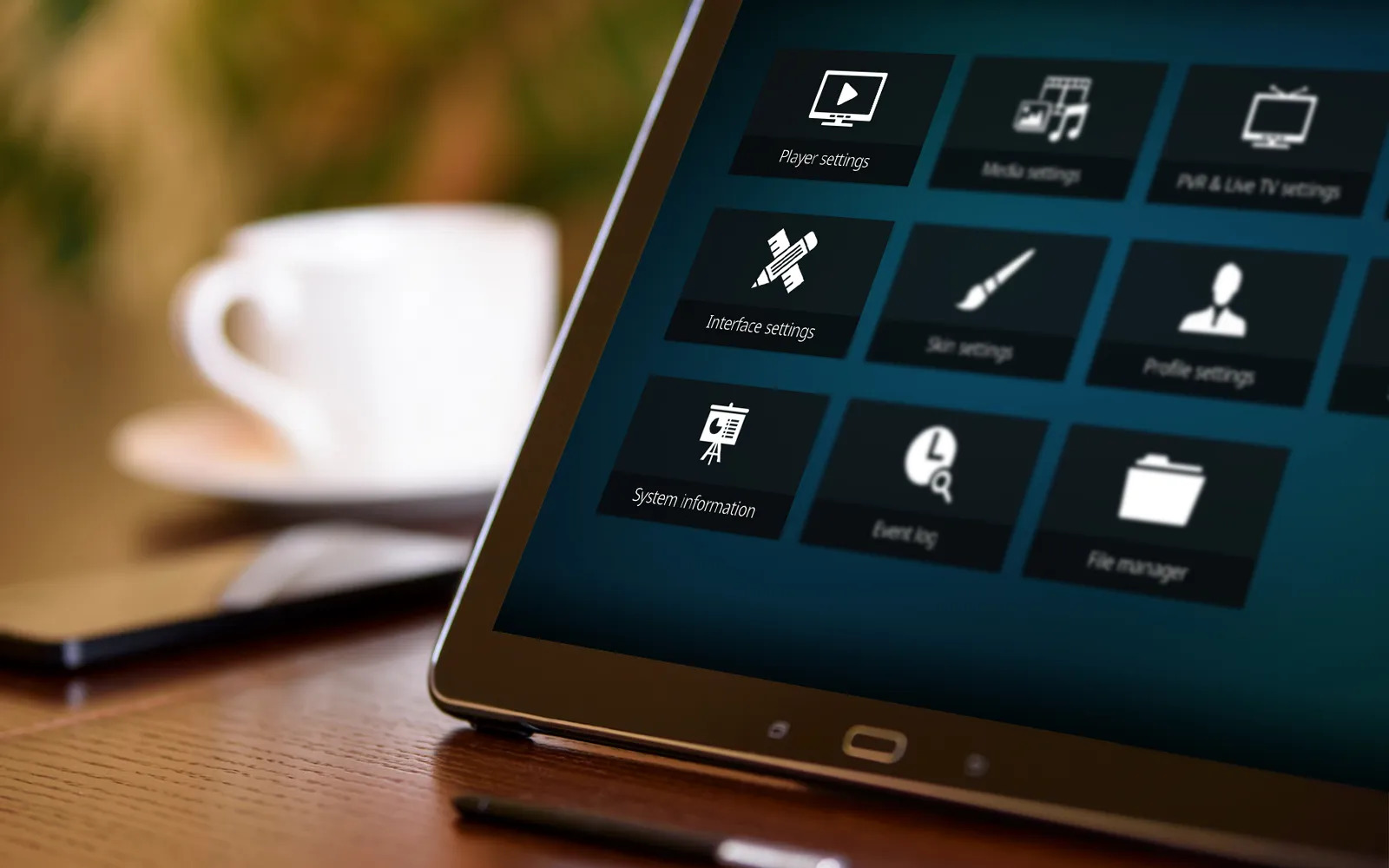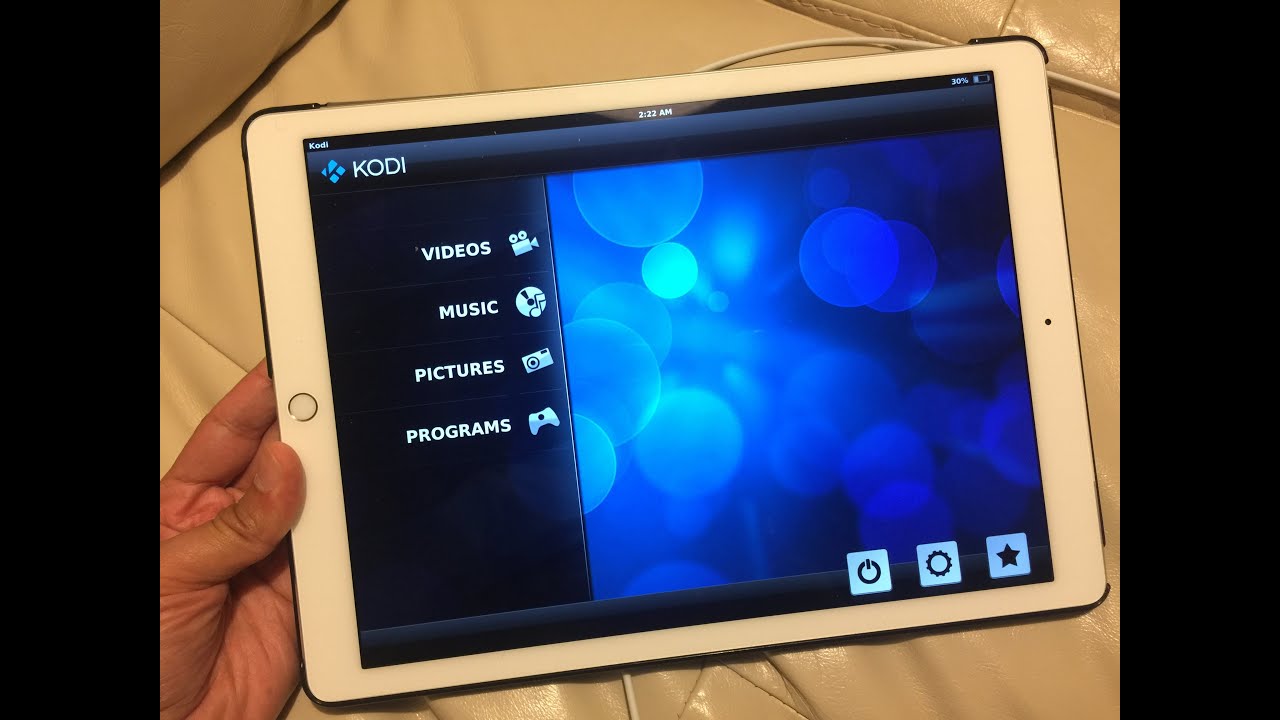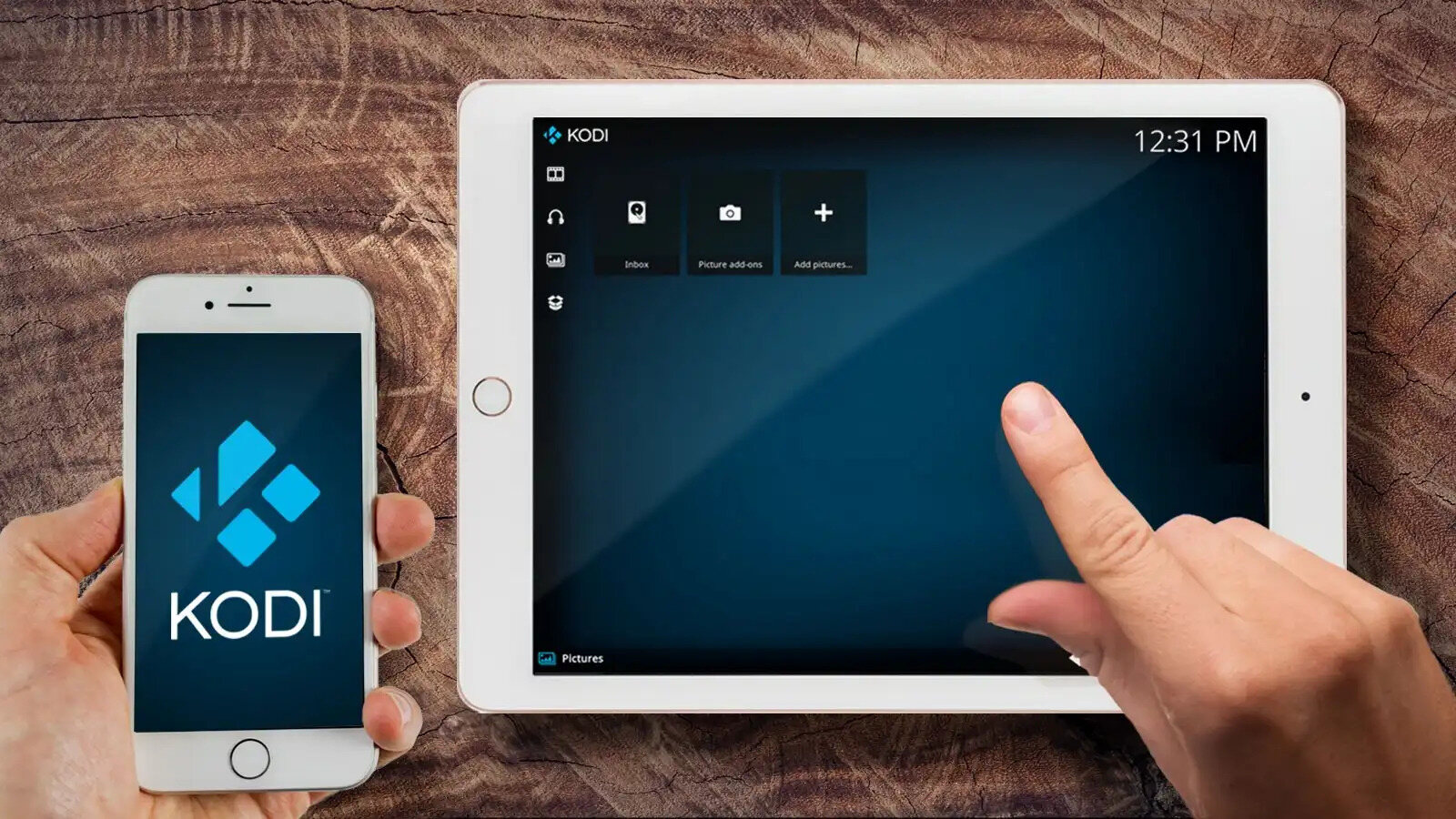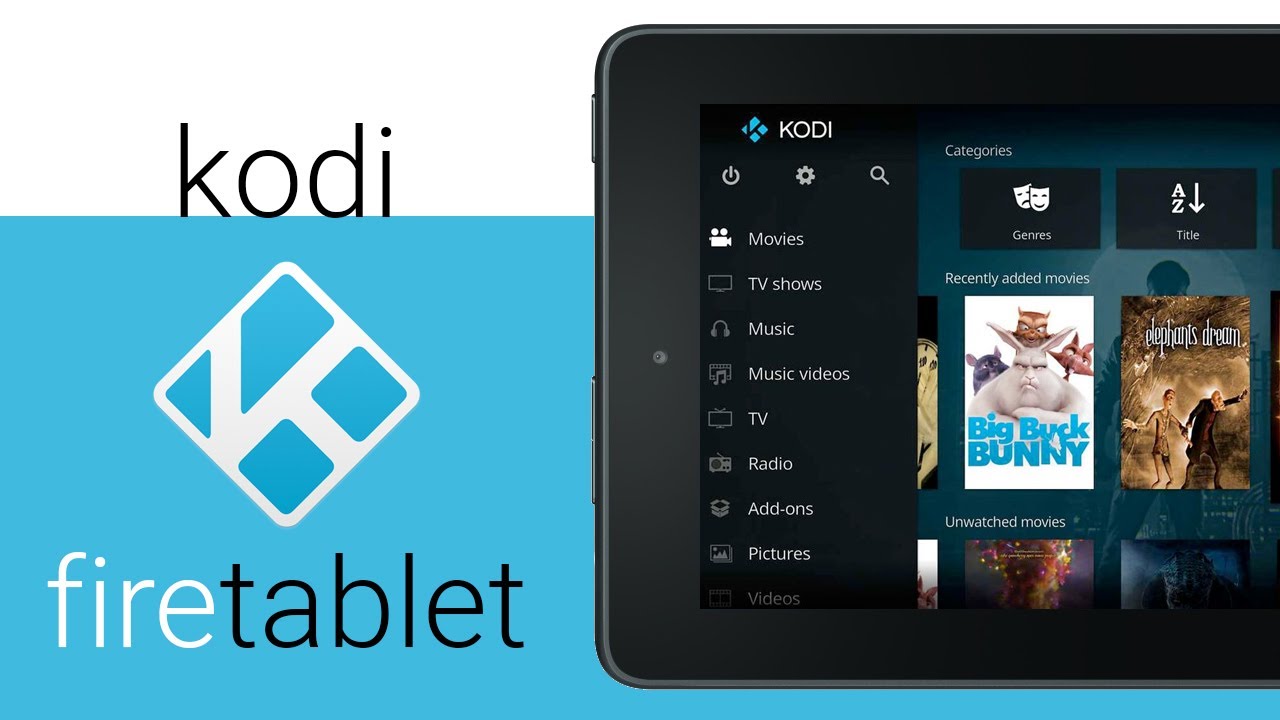Introduction
Technology has revolutionized the way we consume media, and one popular platform that has gained immense popularity is Kodi. Kodi is a versatile open-source media player software that allows users to easily stream and access a wide range of content. While many people are familiar with using Kodi on their computers or smart TVs, utilizing Kodi on a tablet offers a whole new level of convenience and portability.
Imagine having access to your favorite movies, TV shows, music, and even live TV channels, all on a sleek and portable tablet. Kodi makes this a reality, allowing you to transform your tablet into a versatile entertainment hub. Whether you’re looking to catch up on your favorite TV series during a long commute or enjoy a movie night with friends on the go, Kodi on a tablet provides endless possibilities.
In this guide, we’ll walk you through the process of using Kodi on a tablet, from the installation and setup to exploring its features and customizing the experience to suit your preferences. Whether you’re a seasoned Kodi user or a beginner getting started, this guide will provide you with all the information you need to make the most of Kodi on your tablet.
What is Kodi?
Kodi is an open-source media center software that allows users to organize and stream their media content on various devices. Formerly known as XBMC (Xbox Media Center), Kodi has evolved into a powerful cross-platform application that can be installed on various operating systems, including Windows, Mac, Linux, Android, and iOS.
At its core, Kodi acts as a central hub for your media collection, enabling you to manage and access your movies, TV shows, music, photos, and more. It supports a wide range of media formats, making it compatible with virtually any file you may have. With Kodi, you can effortlessly browse and play your media files, create playlists, and even add artwork and metadata to enhance your media library.
However, Kodi is much more than just a media player. It is also a powerful media streaming platform that offers access to an extensive collection of add-ons and plugins. These add-ons allow you to stream content from various sources, including popular video streaming services, live TV channels, radio stations, podcasts, and more.
Kodi puts the control in your hands, allowing you to personalize your media experience. It provides a user-friendly interface that can be customized with different skins and themes, making it visually appealing and easy to navigate. Additionally, Kodi supports a wide range of remote control options, including smartphone apps, enabling you to control your media playback from the comfort of your couch.
One of the biggest advantages of Kodi is its active and passionate community. The Kodi community is constantly developing new add-ons, improving existing features, and providing support and assistance to users. This thriving community ensures that Kodi remains up-to-date, secure, and continuously evolving to meet the needs and demands of its users.
In summary, Kodi is a versatile media center software that offers a wide range of features and functionalities. From organizing and streaming your media collection to accessing online content through add-ons, Kodi provides a comprehensive media solution for your tablet and other devices.
Benefits of using Kodi on a tablet
Utilizing Kodi on a tablet offers numerous advantages and enhances your media consumption experience. Here are some key benefits of using Kodi on a tablet:
- Portability: One of the major advantages of using Kodi on a tablet is the portability it provides. Tablets are lightweight and compact, allowing you to carry your entire media library and streaming capabilities with you wherever you go. Whether you’re traveling, commuting, or simply relaxing in a different room, you can easily enjoy your favorite movies, TV shows, and music without the need for a larger device.
- Touch-friendly interface: Most tablets come with touchscreens, and Kodi offers a touch-friendly interface that makes navigation and interaction seamless. You can easily swipe, tap, and scroll through your media collection, adjust settings, and control playback using intuitive gestures. This intuitive touch interface enhances the user experience and makes Kodi a pleasure to use on a tablet.
- Flexible viewing angles: Tablets allow you to adjust the viewing angle according to your preference. Whether you want to prop it up on a stand, hold it in your hand, or place it on your lap, you have the freedom to choose the most comfortable viewing position. This flexibility ensures that you can enjoy your media content without straining your neck or compromising on comfort.
- Extensive app support: Tablets offer a wide range of apps and tools that can enhance your Kodi experience. For example, you can use a tablet with Kodi to control your smart home devices, such as lighting and audio systems, using compatible apps. You can also download additional media streaming apps or VPN services to further expand your entertainment options and protect your online privacy.
- Offline media storage: Tablets usually come with ample storage space, allowing you to store your media files directly on the device. This means that you can download your favorite movies, TV shows, and music onto your tablet and enjoy them even when you don’t have an internet connection. Kodi on a tablet gives you the flexibility to access your media library without relying on streaming services.
These are just a few of the benefits that come with using Kodi on a tablet. With its portability, touch-friendly interface, flexible viewing angles, extensive app support, and offline media storage capabilities, Kodi on a tablet delivers a convenient and personalized media experience that you can take with you wherever you go.
Preparing your tablet for Kodi installation
Before installing Kodi on your tablet, there are a few important steps you need to follow to ensure a smooth installation process. By preparing your tablet properly, you can avoid any potential issues and optimize the performance of Kodi. Here’s what you need to do:
- Check the system requirements: Start by checking the system requirements for Kodi on the official Kodi website. Ensure that your tablet meets the minimum specifications, including the operating system version, storage capacity, and processing power. This will ensure that Kodi runs smoothly on your tablet and provides the best possible user experience.
- Free up storage space: Kodi requires a certain amount of storage space to install and store media files. Before installing Kodi, make sure to free up some storage space on your tablet. Delete unnecessary files, uninstall unused apps, and transfer files to an external storage device if needed. This will ensure that you have enough space for Kodi and your media collection.
- Update your tablet’s operating system: Keeping your tablet’s operating system up to date is crucial for the smooth functioning of Kodi. Check for any available system updates and install them before proceeding with the Kodi installation. This will ensure that your tablet has the latest security patches, bug fixes, and performance improvements.
- Enable ‘Unknown Sources’: Since Kodi is not available on official app stores like Google Play Store or Apple App Store, you’ll need to enable the ‘Unknown Sources’ option on your tablet. This allows you to install applications from third-party sources. To enable this option, go to the settings menu of your tablet, navigate to the security section, and enable the ‘Unknown Sources’ option.
- Install a reputable antivirus app: To protect your tablet from potential security threats and malware, it’s a good idea to install a reputable antivirus app. This will help to keep your tablet safe while browsing and installing apps, including Kodi. Regularly update the antivirus app and perform scans to ensure the security of your tablet.
By taking these steps to prepare your tablet, you can ensure a hassle-free installation of Kodi and create a secure and optimized environment for enjoying your media content. Once you have completed these preparations, you are ready to proceed with the installation of Kodi on your tablet.
Step-by-step guide to install Kodi on tablet
Installing Kodi on your tablet is a straightforward process that involves a few simple steps. Follow this step-by-step guide to install Kodi on your tablet:
- Enable ‘Unknown Sources’: As mentioned earlier, Kodi is not available on official app stores, so you’ll need to enable the ‘Unknown Sources’ option on your tablet. Go to the settings menu, navigate to the security section, and enable the ‘Unknown Sources’ option. This will allow you to install applications from third-party sources.
- Download the Kodi APK file: Visit the official Kodi website (kodi.tv) on your tablet’s web browser. Go to the download section and select the version of Kodi that matches your tablet’s operating system. Download the APK file to your tablet. Alternatively, you can use the QR code provided on the website to directly download the APK file.
- Install the Kodi APK file: Once the APK file is downloaded, locate it in your tablet’s file manager or notification tray. Tap on the APK file to begin the installation. You may be prompted with a warning message about installing apps from unknown sources. Confirm your choice and proceed with the installation.
- Wait for the installation to complete: The installation process may take a few moments. Once the installation is complete, you will see a notification confirming the successful installation of Kodi on your tablet.
- Open Kodi and configure settings: After the installation, locate the Kodi app icon on your tablet’s home screen or app drawer. Tap on the icon to open Kodi. You will be presented with the initial setup wizard, where you can configure various settings, including language, skin, and media sources. Follow the on-screen instructions to complete the setup process.
- Import your media files: Once you have completed the initial setup, it’s time to import your media files into Kodi. Connect your tablet to a computer using a USB cable or transfer files wirelessly if your tablet supports it. Locate your media files on your computer and copy them into the appropriate folders within Kodi. This will allow you to easily access and stream your media content within Kodi.
With these simple steps, you can install Kodi on your tablet and start enjoying your favorite movies, TV shows, music, and more. Remember to regularly update Kodi to ensure you have the latest features and bug fixes. Now that you have successfully installed Kodi on your tablet, it’s time to explore its features and make the most of this versatile media center software.
Configuring Kodi on your tablet
After installing Kodi on your tablet, it’s important to configure the settings to optimize your media streaming experience. Kodi offers a wide range of customization options that allow you to tailor the app to your preferences. Here are the key configuration steps you should follow:
- Choose a skin: Kodi offers a variety of skins that change the interface’s appearance and layout. Go to the settings menu and navigate to the Interface Settings. From there, select Skin and browse through the available skins. Choose the one that suits your style and personal preferences. You can also customize the skin further by adjusting settings like background images, colors, and fonts.
- Add media sources: To access your media files within Kodi, you need to add media sources. Go to the settings menu, select Media Settings, and choose Library. From there, select Add Videos or Add Music, depending on the type of media you want to add. Browse through your tablet’s storage and select the folders that contain your media files. Once added, Kodi will scan and index your media, making it easily accessible within the app.
- Install add-ons: Kodi’s true power lies in its vast collection of add-ons. These add-ons allow you to access a wide range of online content, including movies, TV shows, live TV channels, music streaming, and more. Go to the settings menu, select Add-ons, and choose the option to Install from Repository. Browse through the available add-ons and install the ones that suit your interests. Add-ons can be found under various categories, such as Video Add-ons, Music Add-ons, and Program Add-ons.
- Configure playback settings: Kodi offers several playback settings that you can customize according to your preferences. Go to the settings menu, select Player Settings, and navigate through the available options. You can adjust settings related to subtitles, video playback, audio output, and more. Experiment with these settings to enhance your viewing and listening experience.
- Set up remote control options: Kodi supports various remote control options that you can use to navigate and control the app. This includes smartphone apps, wireless remotes, and even voice control. Go to the settings menu, select Services, and navigate to the Control section. From there, you can enable and configure the remote control options that best suit your needs.
- Explore additional features: Kodi offers many additional features and settings that you can explore and customize based on your preferences. These include advanced settings for network connections, system settings, library updates, and more. Take some time to navigate through the settings menu and familiarize yourself with the available options to enhance your Kodi experience.
By following these configuration steps, you can personalize Kodi on your tablet and tailor it to your specific needs. From choosing a skin and adding media sources to installing add-ons and customizing playback settings, configuring Kodi allows you to create a personalized and enjoyable media streaming experience on your tablet.
How to use Kodi on a tablet
Using Kodi on your tablet is a seamless and user-friendly experience. Once you have installed and configured Kodi, follow these steps to navigate and use the app:
- Home screen: Upon opening Kodi, you will be greeted with the home screen. Here, you will find various categories and options, including Movies, TV Shows, Music, Pictures, and more. Use your tablet’s touch screen to navigate and tap on the desired category to proceed.
- Browsing content: Within each category, you will find subcategories and options to browse and search for specific media content. Use the touch screen to scroll through the options and tap on the desired content to access it. You can use the on-screen controls to play, pause, fast forward, and rewind media files.
- Streaming add-ons: Kodi’s add-ons are a great way to access a wide range of online content. When you select an add-on, you will be presented with various options and categories to choose from. Use the touch screen to navigate through the options and select the content you want to stream. Kodi will handle the streaming process, allowing you to enjoy movies, TV shows, live TV channels, and more.
- Custom playlists: Kodi allows you to create custom playlists for your media files. To create a playlist, select the desired media category and navigate to the files or folders you want to include. Long-press on a file or folder and select ‘Add to Playlist’. You can then access your playlists from the home screen and enjoy your customized media playback.
- Remote control options: Utilize the remote control options available for Kodi on your tablet. If you have installed a remote control app on your smartphone, launch the app and connect it to Kodi on your tablet. This will enable you to control Kodi’s playback, navigate through the menus, and perform various functions using your smartphone as a remote control.
- Customization: Kodi allows you to customize the app to suit your preferences further. You can change the interface’s appearance by selecting different skins, modify settings related to subtitles, audio, and video playback, and explore advanced configurations to enhance your overall experience. Take the time to explore the available customization options and make Kodi on your tablet truly your own.
With these simple steps, you can easily navigate and use Kodi on your tablet to enjoy a wide range of media content. Whether you’re streaming online content via add-ons, playing local media files, creating custom playlists, or exploring advanced customization options, Kodi on a tablet offers a user-friendly and versatile media experience.
Customizing Kodi on your tablet
Kodi provides ample options for customization, allowing you to personalize the app and tailor it to your preferences. By customizing Kodi on your tablet, you can enhance your media streaming experience and make it truly your own. Here are some key customization options you can explore:
- Choose a skin: Kodi offers a variety of skins that change the app’s appearance and layout. Go to the settings menu, select Interface Settings, and navigate to the Skin section. Browse through the available skins and select the one that suits your style. You can further customize the skin by adjusting settings like background images, colors, and fonts.
- Layout customization: Kodi allows you to customize the layout of certain screens, such as the home screen, library views, and category views. Go to the settings menu, select Interface Settings, and navigate to the appropriate section. From there, you can change the number of items displayed, adjust the order of categories, and enable or disable certain views according to your preferences.
- Configure subtitle settings: If you frequently watch foreign language content or require subtitles, Kodi offers several options for configuring subtitle settings. Go to the settings menu, select Player Settings, and navigate to the Subtitles section. From there, you can change the subtitle language, select the preferred subtitle source, adjust the font size and color, and customize other display settings to ensure a seamless viewing experience.
- Audio and video settings: Customize the audio and video playback settings to suit your preferences. Go to the settings menu, select Player Settings, and navigate to the appropriate sections. From there, you can adjust audio output settings, enable or disable visualizations and screen savers, change video display properties, and fine-tune various playback options to optimize your viewing and listening experience.
- Enable and configure add-ons: Kodi’s add-ons provide access to a vast range of online content. Go to the settings menu, select Add-ons, and navigate through the available options. From there, you can enable or disable add-ons, update them to the latest versions, and configure their individual settings. Take the time to explore different add-ons and customize their settings to maximize your streaming options.
- Change background images: Kodi allows you to change the background images for various screens, such as the home screen or screensaver. Go to the settings menu, select Interface Settings, and navigate to the Skin section. From there, you can browse through the available background images or use your own images to give Kodi a personalized touch.
These are just a few examples of how you can customize Kodi on your tablet. Take the time to navigate through the settings menu, explore the available options, and experiment with different configurations. By customizing Kodi, you can create a visually appealing, personalized, and optimized media streaming experience that perfectly suits your preferences and enhances your enjoyment of Kodi on your tablet.
Troubleshooting common issues with Kodi on tablets
While Kodi on tablets provides a seamless media streaming experience, there may be times when you encounter issues or face challenges. Here are some common issues that people often experience with Kodi on tablets and their possible solutions:
- Streaming issues: If you experience buffering or playback issues while streaming content through Kodi, it may be due to a poor internet connection. Ensure that your tablet is connected to a stable and reliable Wi-Fi network. You can also try reducing the video quality or clearing the cache within Kodi’s settings to improve streaming performance.
- Crashing or freezing: Kodi may occasionally crash or freeze on your tablet. This can be caused by various factors, such as incompatible add-ons, outdated software, or insufficient resources. To resolve this, try disabling or uninstalling any recently installed add-ons, ensuring that your tablet’s operating system and Kodi are up to date, and closing any unnecessary background applications to free up resources.
- No sound or distorted audio: If you are experiencing issues with sound or audio quality in Kodi, first ensure that the volume on your tablet is turned up and not muted. If the problem persists, check your audio output settings within Kodi’s player settings and ensure that the correct audio device is selected. You can also try restarting Kodi and your tablet to see if that resolves the issue.
- Subtitle synchronization issues: Sometimes, subtitles may be out of sync with the video playback. To fix this issue, go to the settings menu in Kodi, select Player Settings, and navigate to the Subtitles section. From there, you can adjust the subtitle synchronization by either delaying or advancing the subtitles to match the video playback.
- App not opening or crashing on startup: If Kodi fails to open or crashes immediately after launching, it may be due to corrupted data or conflicting settings. Try clearing the cache and data of the Kodi app in your tablet’s app settings. If the problem persists, consider uninstalling and reinstalling Kodi on your tablet.
- Network connectivity issues: If you are unable to connect to the internet or access content through Kodi, check your tablet’s Wi-Fi connection. Ensure that you are connected to a stable network and that your tablet’s internet connection is working properly. You can also try restarting your router and reconnecting your tablet to the Wi-Fi network.
If you encounter any other issues with Kodi on your tablet, it can be helpful to visit online forums, community groups, or the official Kodi website for further troubleshooting steps and support. Remember to always keep your tablet’s operating system and Kodi app up to date to ensure that you have the latest bug fixes and improvements.
Tips for maximizing your Kodi experience on a tablet
To make the most out of your Kodi experience on a tablet, consider implementing the following tips and tricks:
- Keep Kodi and your tablet updated: Regularly update both Kodi and your tablet’s operating system to ensure that you have the latest features, bug fixes, and security patches. This will help to maintain optimal performance and ensure compatibility with the latest add-ons and features.
- Organize your media library: Take the time to properly organize your media library within Kodi. Use descriptive file names, add artwork, and assign correct metadata to your media files. This will enhance the visual appeal of your library and make it easier to find and navigate your content.
- Utilize add-ons and repositories: Kodi’s add-ons and repositories offer a wealth of additional content and features. Explore different add-ons, such as streaming services, sports channels, and music plugins, to expand your media streaming options. However, be cautious and only install add-ons from trusted sources.
- Consider using a VPN: If you plan to use Kodi to access geo-restricted content or to enhance your privacy, consider using a virtual private network (VPN). A VPN will encrypt your internet connection, allowing you to bypass regional restrictions and protect your online privacy while using Kodi on your tablet.
- Optimize tablet storage: To ensure smooth performance and maximize storage space, regularly clean up your tablet’s storage. Delete unnecessary files, transfer media to external storage, and uninstall unused apps. This will provide sufficient space for Kodi and your media collection.
- Customize Kodi with add-on settings: Most add-ons within Kodi come with their own set of settings. Take the time to explore and customize these settings to further personalize your media streaming experience. You can adjust video quality, enable/disable certain features, and configure subtitle options, among other settings.
- Experiment with Kodi skins: Kodi offers a wide range of skins that can completely change the look and feel of the app. Experiment with different skins to find one that suits your aesthetic preferences and enhances the overall user experience on your tablet.
- Take advantage of tablet features: Tablets have unique features that can augment your Kodi experience. Utilize features such as voice control, split-screen multitasking, and gestures to navigate Kodi more efficiently and enhance your overall user experience on your tablet.
By implementing these tips, you can maximize your Kodi experience on a tablet. From keeping your devices updated to optimizing your media library and exploring add-ons, these practices will enhance your Kodi streaming experience and ensure that you get the most out of your tablet and the versatile media player that Kodi provides.
Conclusion
Using Kodi on a tablet opens up a world of entertainment possibilities. Whether you’re streaming your favorite movies and TV shows, listening to music, or exploring a wide range of online content through add-ons, Kodi offers a versatile and user-friendly media player experience on your tablet.
In this guide, we’ve outlined the process of installing, configuring, and customizing Kodi on your tablet. We’ve also provided troubleshooting tips and highlighted ways to maximize your Kodi experience. By following these steps and implementing the tips and tricks, you can create a personalized and optimized media streaming experience that suits your preferences.
Kodi on a tablet combines the convenience and portability of a tablet device with the power and versatility of Kodi’s media center software. By taking advantage of the touch-friendly interface, customizable skins, extensive add-on library, and tablet-specific features, you can enjoy a seamless media streaming experience on your tablet, whether you’re at home or on the go.
Remember to keep your tablet and Kodi updated, organize your media library, explore different add-ons, and utilize customization options to tailor your Kodi experience. Additionally, be aware of potential issues and follow troubleshooting steps to overcome any challenges you may encounter.
With the right setup and customization, Kodi on a tablet can become your go-to entertainment hub, providing access to a vast array of media content and enhancing your overall viewing and listening experience. So, go ahead and transform your tablet into a powerful media streaming device with Kodi.







